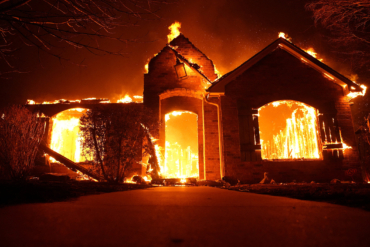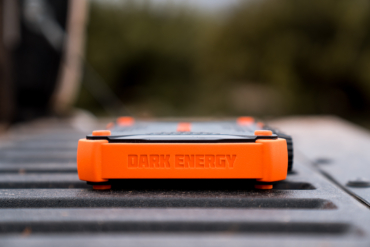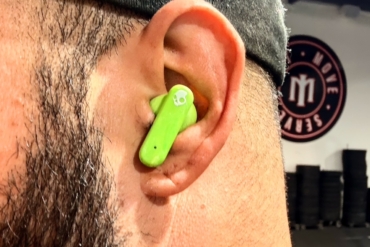Whether on the chairlift at your local ski hill in the snow, in your four-wheel rig crawling over rocks in the woods, or paddling your kayak on still water, walkie-talkies are a handy piece of gear — if you know how to use them.
Well before the advent of the cellphone, outdoor enthusiasts have been using walkie-talkies for two-way communication. Nowadays, these devices are primarily used in areas that lack cellphone reception.
The benefits of a walkie-talkie over other forms of communication in the backcountry are ease of use and low cost, nearly eliminating the barrier to entry. Still, walkie-talkies have a limited range due to the line-of-sight functionality. Other handheld communicators used in the backcountry use satellites, repeaters, or can bounce radio signals off of the atmosphere.
In this how-to for walkie-talkies, we’ll guide you through the main factors to focus on after purchasing your two-way radios.

Charge the Batteries
Ensure all walkie-talkies are fully charged before heading out on your adventure.
Whether radios use AAA batteries or can be charged by USB, a full charge is a priority. Like any other electronic gear, check battery levels the evening before you head out. A weak or dead battery is the No. 1 roadblock for easy communication, and even the most experienced can forget this step.
If you’re on a multiday trip, make sure to pack a battery bank, solar panel, or extra batteries (if it is a non-rechargeable radio). At the end of the day, when everyone is back together, turn off the radio to save battery.
Another tip we’ve learned while hunting is to schedule radio “check-ins” at designated times during the day. That way, you don’t need to leave your radio turned on all the time and just turn it on for a few minutes around a predetermined time.
Be aware that cold temperatures will drain the battery faster. Keep them inside your jacket when not in use, and sleep with them in your sleeping bag at night to keep the battery warm.
Sync Channels & Privacy Codes
Key all radios onto the same channel and privacy code.
To communicate with the other radios in your group, key into the same channels. Wait to sync channels until you’re on location to see if someone else is already using that channel. After choosing a channel, press the push-to-talk button and ask, “Is this channel in use?”
The privacy code of your radios also needs to be synced. Every radio brand has a different term for the “privacy code” and a different number of available privacy codes.
Some radios have a keypad lock feature that prevents users from accidentally changing the channel. If one radio is mistakenly keyed into a different channel, they will be disconnected from your party’s communication until they rekey to the agreed-upon channel and privacy code.
Note: There are FRS (Family Radio Service) and GMRS (General Mobile Radio Service) channels. FRS is low-range and does not require a license for use. GMRS utilizes the higher power and higher ranges available with your radio.
This requires an FCC license to operate legally. Many radios include the options to use both channels, so be sure to use the FRS channels by referencing your radio user guide if you don’t have an FCC license.
Storage & Accessibility
Store your radio where it’s easy to reach, attach it to yourself if needed, and avoid putting it somewhere that you accidentally key the push-to-talk button.
You don’t want to have to take your backpack off while sitting on a chairlift each time you hear your friends or family calling on the radio. Most radios have clips, but utilize an additional bungee type strap while engaged in a high-intensity sport like skiing. Be sure that the strap and any other object is not pressing on the push-to-talk button, creating a closed channel where others can’t send communication.
Know if your radio is weatherproof or waterproof. Some walkie-talkies are fully immersible and float, useful for paddling and boating applications. If your radio has no protection from the weather, and there is precipitation, store the radio inside the pocket of a waterproof jacket.
Range & Obstructions
These radios operate on a line-of-sight function, with weather affecting the range.
Any obstructions will significantly affect the quality and ability of communication. If in vehicles while attempting to communicate, the range is likely less than a mile. Trees are another common obstruction. The range will also change dramatically from a bluebird skiing day to a heavy storm day.
When reading the maximum range on the technical specs of your radios, note that this is only accurate under absolutely perfect line-of-sight conditions. If both parties are on top of mountains, within range, with zero trees, dust, clouds, wind, or precipitation, you may achieve maximum range.
In most real use cases for two-way radios, there are many obstructions. But good radios can still usually communicate through a forest for a surprisingly long distance.
Proper Radio Communication
Utilize proper radio etiquette for highest-quality communication and to respect others.
- First, wait for the other party to finish their communication and the line to be clear.
- Next, know what you’re going to say before you key the radio.
- Then, fully press the push-to-talk button and speak clearly. Keep your transmission brief and to the point.
- Say “over” once your transmission is complete.
Know your communication is never private. Anyone who has a two-way radio can be keyed into your channel, even when you use privacy codes. Because families often use two-way radios to keep in touch with their children, be mindful of language.

Two-way radios, or walkie-talkies, are an accessible way to communicate with your group while enjoying a variety of outdoor activities. However, don’t rely on walkie-talkies as a primary safety device. Avalanche beacons, satellite communication devices, first-aid kits, and proper knowledge and gear for your chosen activity are all requirements for safety.
If you enjoy using walkie-talkies and want to level up your radio game, look into getting an FCC license for GMRS communication or your ham radio technician’s license for amateur radio communication.










